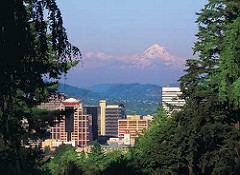Field-to-collections Bioblitz at ESA 2017: Difference between revisions
No edit summary |
No edit summary |
||
| Line 1: | Line 1: | ||
Calling all ecologists! Portland’s Forest Park is the largest urban forest in the United States and home to the unique flora and fauna of the Pacific Northwest, yet our understanding of its biodiversity, especially in disturbed areas, is incomplete. Join iDigBio (Integrated Digitized Biocollections) as we seek to fill this knowledge gap | Calling all ecologists! Portland’s Forest Park is the largest urban forest in the United States and home to the unique flora and fauna of the Pacific Northwest, yet our understanding of its biodiversity, especially in disturbed areas, is incomplete. Join iDigBio (Integrated Digitized Biocollections) as we seek to fill this knowledge gap. To this, we'll be collecting voucher specimens and their data along with observational records and getting your input, as ecologists on what information is critical to capture to make this data fruitful for your research. | ||
{|style="margin: 0 auto;" | {|style="margin: 0 auto;" | ||
Revision as of 12:27, 26 June 2017
Calling all ecologists! Portland’s Forest Park is the largest urban forest in the United States and home to the unique flora and fauna of the Pacific Northwest, yet our understanding of its biodiversity, especially in disturbed areas, is incomplete. Join iDigBio (Integrated Digitized Biocollections) as we seek to fill this knowledge gap. To this, we'll be collecting voucher specimens and their data along with observational records and getting your input, as ecologists on what information is critical to capture to make this data fruitful for your research.
As we hike through Forest Park, we will discuss best practices for collecting plant and insect specimen data. We will make biodiversity observations along the locally famous “Wildwood Trail” and the “BPA road” in Forest Park, both popular trails likely to host many native and exotic species. After a morning of observing and documenting biodiversity, we will enjoy lunch outdoors overlooking the beautiful Willamette River. We will then travel to the Hoyt Arboretum Herbarium, where local staff will introduce us to specimen preparation, curation, and digitization—the creation of digital metadata and images of specimens—and how natural history collections and ecology can mutually benefit each other. There should be time to explore the Hoyt Arboretum as well.




